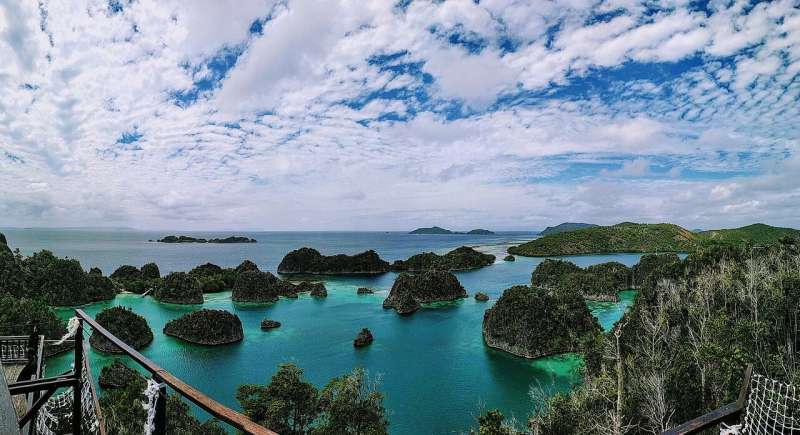Piaynemo Island, Raja Ampat, West Papua, Indonesia. Credit: Irma Ade - Own work, CC BY-SA 4.0
Resource-limited emergency departments responding to the COVID-19 pandemic face many challenges—their strength lies in their unique solutions, according to the authors of a Perspective published online today by the Medical Journal of Australia.
"Emergency departments (EDs) provide an interface between community and hospital care, and address unmet needs for vulnerable patients," wrote the authors, led by Dr. Isobelle Woodruff, a Resident Medical Officer at Monash Medical Center, and Dr. Rob Mitchell, emergency physician at Alfred Health and Ph.D. scholar at the Monash University School of Public Health and Preventive Medicine.
"These roles are augmented during communicable disease outbreaks, when EDs fulfill surveillance, triage and clinical care functions. Most low and middle income countries across the Indo–Pacific score below the average preparedness level and are among the least prepared countries. [This] reflects pre-existing gaps in health care capacity that are likely to be exacerbated during a public health emergency," Woodruff and colleagues wrote.
"As demonstrated by several Pacific countries, island states have greater ability to shut their borders and limit inward passage of the virus. However, a freeze on international access will have a significant socio-economic impact and is unlikely to be sustainable. It may also affect the supply of essential medical equipment, surveillance capacity (given that certain countries rely on foreign pathology services for COVID-19 testing) and retrieval systems."
Another challenge was that social distancing was "antithetical" to many sociocultural practices across the Indo-Pacific, "where communal living is common and regular congregation at community meeting places is the norm. Low and middle income countries face challenges in personal protective equiment procurement because of supply chain limitations as well as market-based competition with high income countries. Public health responses across the region have already been complicated by extreme weather events and humanitarian crises. Examples include Cyclone Harold, a category 5 cyclone that recently affected the South Pacific, and the climbing infection rate in the worlds' largest refugee camp at Cox's Bazar in Bangladesh. Worsening climate change will further exacerbate the incidence and severity of natural disasters and disease outbreaks," Woodruff and colleagues wrote.
Other challenges include:
- there is a risk that distraction from pre-existing health priorities will worsen the overall impact;
- lockdown measures will make it difficult for some patients to access emergency care;
- fear of acquiring COVID-19 in hospital may create a further barrier to ED attendance;
- the socio-economic consequences of public health interventions are likely to contribute to poor health outcomes in the longer term;
- risk that donor funding will target resource intensive equipment (such as ventilators) that may be unsuitable in a lower- middle-income country context;
- gendered impact, exacerbating the "triple burden" of productive, reproductive and community work responsibilities imposed on women.
"COVID-19 provides an opportunity to build resilient EDs that are better prepared for this challenge," Woodruff and colleagues wrote.
"Australian agencies, such as the Indo–Pacific Center for Health Security, have a key role to play in resourcing this activity. The pandemic provides a unique opportunity for the Australian Government to advance its commitment to strengthening health care systems and deliver on the promise of its Pacific Step-up. It also offers a chance to leverage Australia's expertise in emergency care for the benefit of the region. Although local ED clinicians are already demonstrating leadership and adaptability in their surge planning, the pandemic provides an opportunity to build resilience in emergency care systems and enhance future capacity for both routine care and outbreak response. Australian clinicians, organizations and governments have a key role to play in supporting this effort," they concluded.
More information: Isobelle G Woodruff et al. COVID ‐19 and the Indo–Pacific: implications for resource‐limited emergency departments, Medical Journal of Australia (2020). DOI: 10.5694/mja2.50750
Journal information: Medical Journal of Australia
Provided by Wiley
























